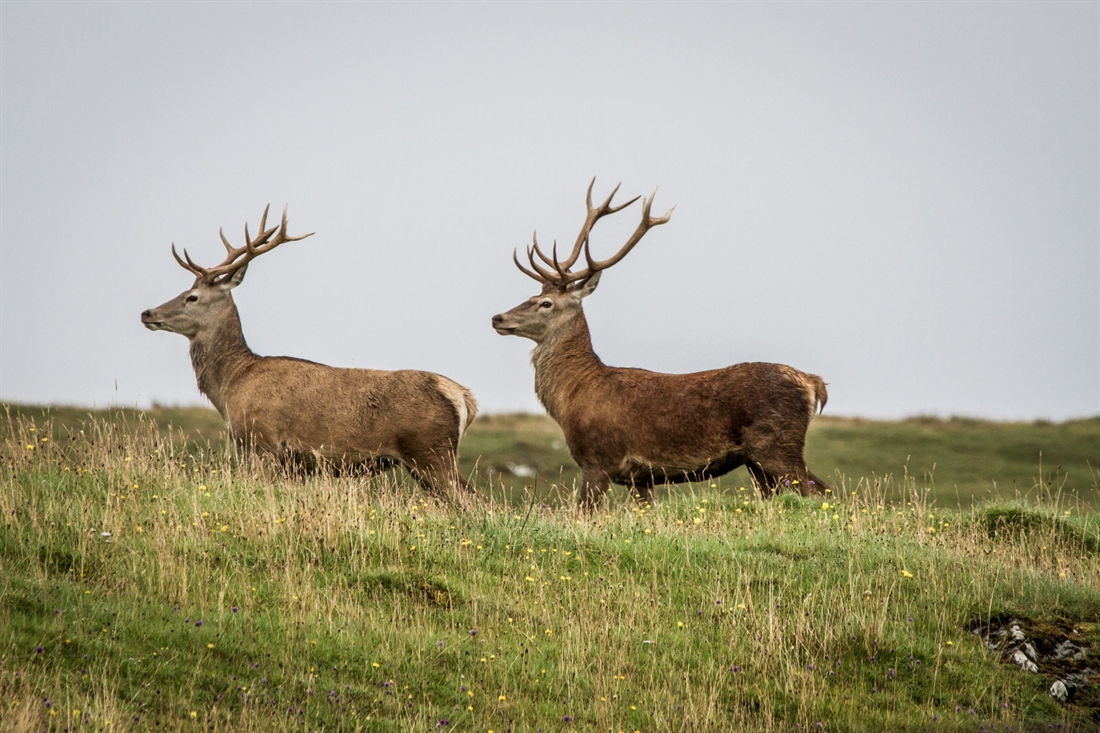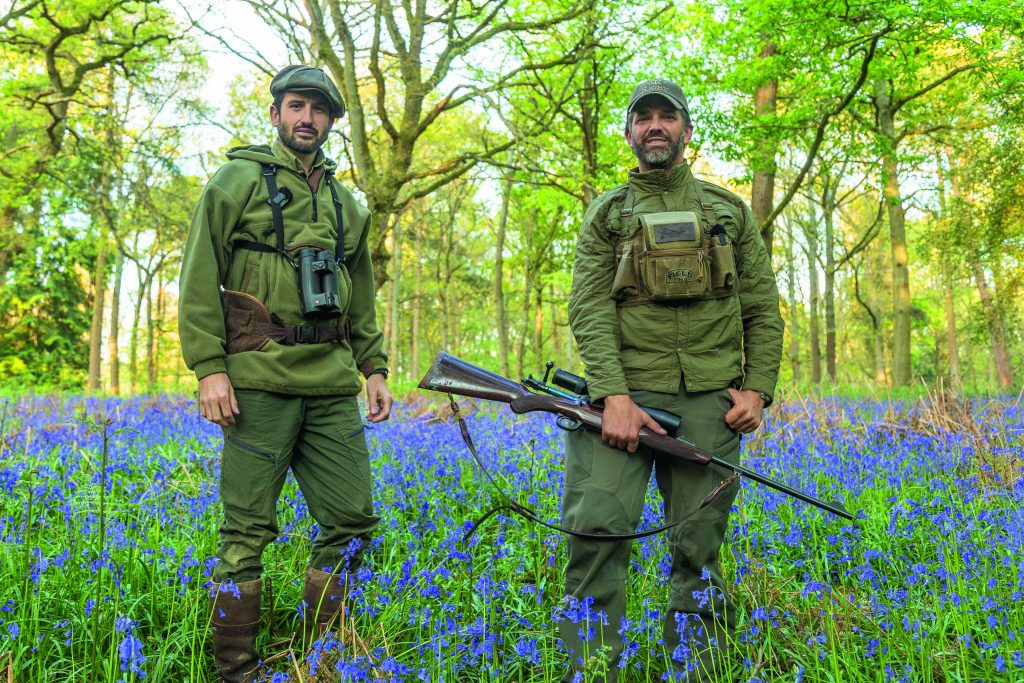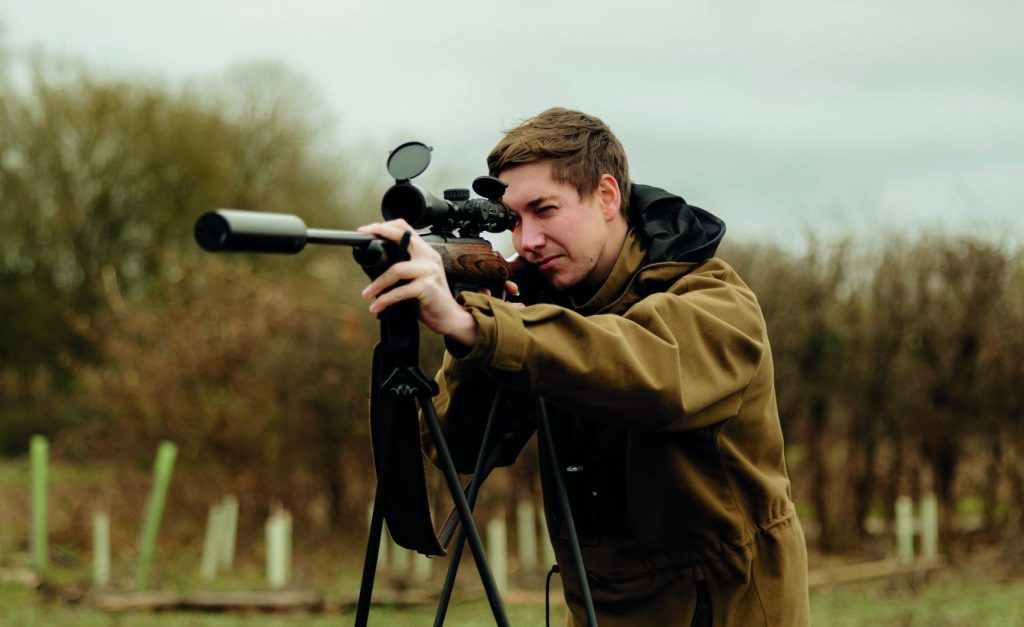Moor time on the hill
We all need to do our bit to promote Scottish deerstalking, says the sixth baronet and owner of Borrobol Estate in Sutherland, Michael Wigan.

Britain has many deer and many deer species. However, as Brits lose our taste for the classic stalking challenge, shooting a red stag in the Scottish Highlands, Europeans are replacing us. A 2018 study by Knight Frank showed Europeans for the first time becoming the main customer base for Scottish red stag stalking.
It is worth considering why. In Europe generally red deer are regarded with respect and admiration. The antlered stag is a symbol on the Continent of natural majesty and grandeur. The annual theatre of the rut is known and wondered at. Stags and hinds may not be visible in large parties on open hill, which is uniquely Scottish, but they are glimpsed and admired. Venison from red deer is pride of place in many country bars and eateries. The red stag is the biggest most dramatic mammal in almost every territory he frequents.
In Scotland the same is true. Polls show the red stag as the nation’s favourite animal. In a place where countryside is never far off and where landscape and nature are valued across every community, the red stag remains the same symbol of majesty in nature that lent it royal association in Queen Victoria’s time.
Why then should red deer stalking have slid in its place as the most exciting sporting challenge? Not on account of cost. There are golf courses where for half a day you can knock little white balls over the grass for the same charge as a day on the hill with the stags roaring and fighting and the mountain wind in your hair. Are we losing our appetite for the ultimate sport?
Some say disturbance by hikers has undermined a day on the hill, causing stags to bolt off when winds carry human smell and a long approach by the stalking party is suddenly rendered pointless. But in Knight Frank’s survey disturbance was raised as an issue by very few.
The survey’s 54 stalking estates were asked about the client base. Both for hind stalking and stags most customers were repeat business. So those already hooked on stalking continue, even while their tweeds get threadbare. It is the failure to attract new participants that is hurting, despite stalking across the UK rising in popularity. Why should it be?
Public perception plays a part. Stalking is now referred to as deer ‘hunting’ in most public documents in Scotland. Stalking has become a word with different connotations and mostly unsavoury ones. Deer hunting, strictly speaking, died out with the deer drives or tinchels of long ago, with hounds and beaters driving deer to marksmen concealed behind rocks and folds in the ground. The other deer hunting was on horseback in south-west England and stopped by the 2004 Hunting Act.
Any creature with connotations of privilege and status is a dangerous thing in 21st century Scotland. There is a new hierarchy. Rodents like beavers are hallowed, deer are vilified.
Any creature or activity or denoting entitlement and difference is unwelcome in the coalition government of the Greens and the Scottish Nationalists. Deer stalking is not a hobby for any coalition politicians. It arouses antipathy. Identification of the red deer as a problematic animal, preferably to be whittled down in numbers, transfers across to its status as the finest creature in sport.
Red deer are portrayed as being a problem for the environment. Being large and conspicuous and having value for those disfavoured types, the landowners, deer have been identified as primary culprits in environmental degradation of any sort. Not only their browsing of plants but the impact of their hooves on moorland has been targeted. Other impacts — insect attack, frost-burning, hares and small rodents, sheep, nitrates in the atmosphere, natural events like landslides — all are ignored. Officially the only reason moorland can be degraded is deer. The benefits of deer on moorland, like calcium deposition from their antlers and bones, go unremarked.
Forty years ago too many red deer had over-impacted moorland, without doubt. I remember diagonal tracks de-facing hillsides, where lines of deer had trotted up and down the slopes. Since then numbers have been remorselessly reduced. That tracking does not exist any more.
On moorland the densities permitted by NatureScot, the successor to Scottish Natural Heritage, are defined as so many animals per square kilometre. Scotland’s red deer are freeranging but over much of their territory density is around 10 per kilometre. Many aspects of this have been good. The hill is in better heart, and deerstalking has adapted and often improved too.
Social and cultural change has affected stalking. The deer forest area has shrunk, maybe by a quarter in 30 years. Partly it reflects the new type of landowner. Conservation charities and trusts and community-owned estates, with rapidly growing acreages, seldom have maintenance of red deer populations as an aim. The buzz words are tree-planting, carbon storing, drain-blocking, beavers, green energy. Some famous deer forests, like Glenfeshie, are being run for new aims. The restoration of woodland often entails the eradication or severe reduction of deer.
Long ago the wildlife manager and stalker Ronnie Rose showed how both could be achieved. Mineral testing soils and designing deer-friendly woods, he demonstrated that a properly managed and utilised landscape could serve both ends. His disciplines, never contradicted in his day, are forgotten. Just as not long ago hardwood forest was cleared to make way for conifer plantation, for example on Loch Ness, so deer forests are making way for single-focus conservation aims now.
The Deer Working Group (DWG) in 2019 was set up to appraise any need for regulatory change. The group was fractious from the start, resulting in resignations from deer-knowledgeable members. The eventual document’s recommendations reduced deer status to vermin in some cases, equivalent to rats, jemmying open the traditional close seasons for stags so that they could be shot year-round. Red deer, native animals, here long before man, were identified as Scotland’s principal environmental villain.
Entirely without honourable respect for the animal new lethal weaponry to kill them was recommended, including high-tech aids to night-shooting. The season for hinds was to be extended, bullets thudding into the bodies of animals with dependent calves. The document represented all-out war on deer. The justification was the ‘public interest’. Had the real public ever been asked they would have rejected these brutal proposals outright.
The DWG authors all through the paper referred to old-fashioned stereotypes long gone. They seemed to inhabit some time-warp from 50 years earlier. Bizarrely they even criticised collaborative management, presumably because the participants might hold residual sympathy for the animal under discussion. They ignored the fact that deer numbers have been falling steadily for five years. Government has accepted the report but not yet acted on it. It is in the spirit of official policy.
Tainted official attitudes feed directly into the status of stalking as sport. If the animal is cast as the sole enemy of Scotland’s environment how can removing it be seen as a cherished and valued activity? Put starkly — if stags are vermin why pay to shoot them?
The contradictions are obvious — if Scottish government has waged war on its grandest large mammal, why extol the benefits of wild venison as a low-fat natural meat?
The thinking is without thought. It dresses up a social agenda, against occupiers of land, in green credentials. The antipathy of Scotland’s parliament to its most totemic wildlife explains the suppression of interest in Scottish deer stalking. The Europeans, less complex in their attitude to wildlife, to whom deer are not political mascots, are replacing our own stalkers.
New owners of Scottish estates have new motivations. Slithering through wet ground to get onto a knoll and find the shootable stag is not normally among them. Bigger land areas are being bought for their conservation value, for their carbon storage potential, and for their wild values. The Dane Anders Povlsen whose company WildLand now owns over 220,000 acres, by the sheer scale of the spending and benefiting from a favourable public profile, has had an effect. Woe betide had he been English! Povlsen believes the draw of wild land in the remoter parts of Scotland can resuscitate lost populations and revitalise shrunken communities.
He has other novel ideas. On Glenfeshie, although thousands of deer have been shot to permit trees to grow, visitors can go virtual stalking. You get onto the stag for the shot, but there is no bullet in the rifle. Stag numbers are unchanged so in theory there could be stalking parties all over the place, people paying just to approach deer. No need for an extraction vehicle, for cleaning the rifle, or for the incarnadine larder work. All very virtual.
It resembles stalking with a camera, but there is a different message. One is simulating an experience with a kill the other is not. Does stalking absolved of shooting equate to the real thing? I think not. In reality deer know when humans with lethal intent get close. They have a sixth sense as well as the others. But at Glenfeshie they may not be saying that.
New concepts can change attitudes. The opinions of public personalities like Povlsen, who has so heroically put his money where his mouth is, affect wider sentiment. Twinned with government policies insistently to cast deer as vermin, the status of the monarch of the glen falters.
There is only one solution — for more people to go stalking. Nothing compares to the feeling of a day on the hill and coming home emotionally overloaded, soaked, muscles weary, stag behind in the trailer. But saying it won’t help. Only doing it will.
Related Articles
Get the latest news delivered direct to your door
Subscribe to Fieldsports Journal
Elevate your experience in the field with a subscription to Fieldsports Journal, the premium publication for passionate country sports enthusiasts. This bi-monthly journal delivers unparalleled coverage of game shooting, fishing and big game across the UK and beyond.
Each issue offers a stunning collection of in-depth features, expert opinions and world-class photography, all presented in a timeless yet contemporary design.
Save 10% on shop price when you subscribe, with a choice of packages that work for you. Choose from Print & Digital or Digital only with each journal delivered directly to your door or via the app every other month, plus access to past issues with the digital back issue library.







